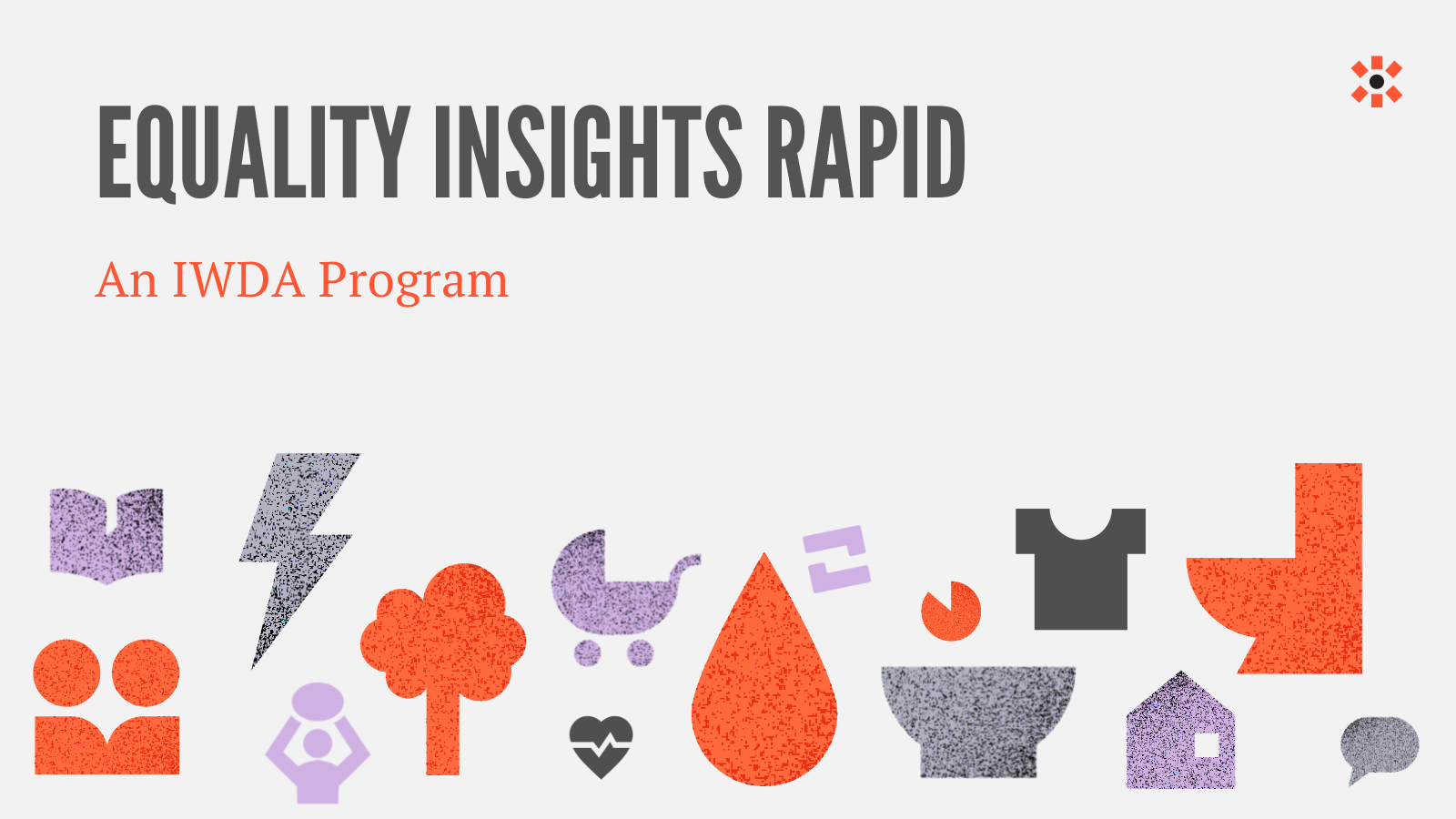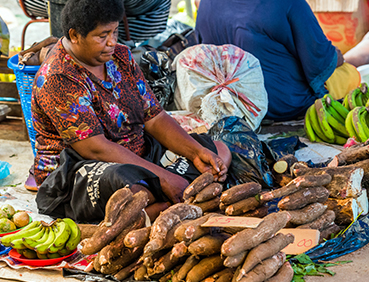Gender-Just COVID Recovery: From Intention to Outcome
This blog was written for the Friedrich Ebert Stiftung W7 blog series and first appeared on the Friedrich Ebert Stiftung website in May 2022.
The COVID-19 pandemic has exacerbated gender inequality and reversed progress towards gender equality. Addressing this requires purposeful action, based on evidence of the diverse circumstances facing women, men, non-binary and gender-diverse individuals. Available quantitative data of this kind, however, is woefully inadequate, often partial, and measured with tools that embed and perpetuate patriarchal assumptions about how poverty is experienced. To make a gender-just recovery a reality, the G7 and countries with feminist foreign policies must lead the pivot to new gap look beyond the household level; enable multidimensional capture of individuals’ circumstances, and; intersectional analysis.
The pandemic has eroded gender equity gains
COVID-19 and the resulting economic shocks have highlighted existing social and economic fault lines in and between countries, exacerbating wealth inequality, gender inequality, poverty and marginalisation. A recent study by the University of Washington’s Institute for Health Metrics and Evaluation reported that the pandemic’s impact on women has been more negative than for men—particularly in terms of labour force participation, unpaid care, educational attainment and gender-based violence. In 2021 the World Economic Forum assessed that COVID’s effects would delay achievement of gender equality by 36 years, pushing it 136 years into the future. Oxfam International estimates that globally, the effects of COVID in 2020 alone cost women in the formal labour force USD $800 billion in lost income, with a loss of 64 million jobs. The deep gendered norms underpinning such impacts become clear in use of time; nearly two-thirds of mothers report that they picked up most or all the additional unpaid care created by the pandemic, while a study in Turkey during lockdown found that women’s total work hours (paid and unpaid) increased while men’s decreased.
What we don’t know about the pandemic’s effects
While gender equality has not fared well during the pandemic, we have, at best, a fuzzy picture. To cite UN Women’s report Gender Equality in the Wake of COVID-19: “the limited availability of data is leaving many questions unanswered.” The World Bank considers that these persistent gender data gaps mean “the foundation for designing effective policies that benefit women and men, girls and boys…is often incomplete, methodologically flawed, or completely lacking.” Part of the story is the under-resourcing of gender data but methodological flaws also persist as they are designed into the way data is collected. For example, measuring household poverty conceals differences between individuals in those households and in specific cohorts. Disaggregation by gender alone cannot convey the diversity of women’s experience for women are not a homogenous group. To understand how gender intersects with factors like age, disability and ethnicity to shape outcomes requires individual-level data. Measuring financial circumstances, alone, cannot tell us all we need to know about gendered poverty. Focusing on households also undercounts global poverty and inequality, by systematically ignoring the estimated one-third of inequality within households globally, and over-estimates the extent to which higher GDP translates into improvements for individuals.
What does it take to get a sharper focus?
Overcoming the persistent gender data gaps that constrain evidence-based policy making means tackling data collection funding, frequency and regularity, capacity of data producers such as National Statistics Offices, and integration of methodological innovations.
We need to change what, how and why we measure when collecting poverty and inequality data.
What we measure
Currently, poverty measurement focuses predominantly on financial aspects. Multidimensional measurement incorporates additional areas. The Global Multidimensional Poverty Index (MPI), tracks deprivation in three dimensions (health, education, living standards), using 10 indicators: child mortality, nutrition; years of schooling, school attendance; cooking fuel, sanitation, drinking water, electricity, housing materials, assets. However those with lived experience of poverty cite a wider range of relevant factors. That insight underpins the methodology of a new measurement tool, Equality Insights. Over 3,000 men and women from six countries with lived experience of poverty informed development of its multidimensional framework. In order to reflect the relationship between multidimensional and financial deprivation, it includes 15 parameters—health, water, food, shelter, sanitation, clothing, safety, family planning, voice, energy, relationships, environment, education, time-use, and work—and a separate asset assessment to appraise financial circumstances.

How we measure
The most widespread money-oriented poverty metrics—the International Poverty Line and various national versions—are derived from data on households, e.g. from household income and expenditure surveys. The Global MPI, the most popular multidimensional method, also uses household data. Poverty measurement is a dynamic, evolving field, with initiatives to support further analysis of household data to generate disaggregated insights. Nonetheless, household-level measurement of poverty fundamentally limits insights. It means we cannot see the full picture of how poverty affects different people within households -connected to gender, stage of life, disability, ethnicity, geographic location or other characteristics. Individual-level measurement that corrects for this enables more accurate disaggregation and intersectional insights, strengthening the evidence base for action on the multiple, overlapping barriers that perpetuate poverty and inequality. Data innovations such as Equality Insights Rapid, the Gender Equality for Food Security Measure and the Water Sanitation and Hygiene Gender Equality Measure move in this direction.
Why we measure
Too often poverty and inequality are measured in ways that seek to understand experiences common to men and women. However, after centuries of patriarchy, commonality defaults to male experience. We need measurement that recognises poverty’s gendered elements and helps to make them visible. That calls for more than disaggregation. It requires a gender-sensitive framework for measuring poverty. Otherwise the data will discount or de-value dimensions that profoundly affect women and shape their experience of poverty, including sanitation, time-use, family planning and voice.
The G7’s role
Three G7 countries now have feminist foreign policies—Canada, France and Germany. All share a commitment to enhancing women’s rights, resources and representation in pursuit of gender equality. In the 2021 G7 Leaders’ Communiqué, all members pledged to “build back better” from the pandemic, rearticulated the shared importance they accord to gender equality, and acknowledged the “importance of developing a strong evidence base of gender-disaggregated data and analysis” to support women’s economic empowerment. These are crucial jumping off points for the G7 to lead a pivot towards use of new, robust, high-quality data sources, enabling a clearer, more comprehensive picture of the pandemic’s impacts by gender, and a stronger base of policy-relevant information to address these and reach those lagging furthest behind. Early international uptake of innovative methods, such as Equality Insights, in countries including the Solomon Islands, Fiji, Indonesia, and South Africa, should be further supported by the G7. The aim is to rapidly drive up availability and use of these quality data sources, by supporting gender-responsive data as the appropriate standard to enable gender-responsive policy action. That would immeasurably impro


Comments